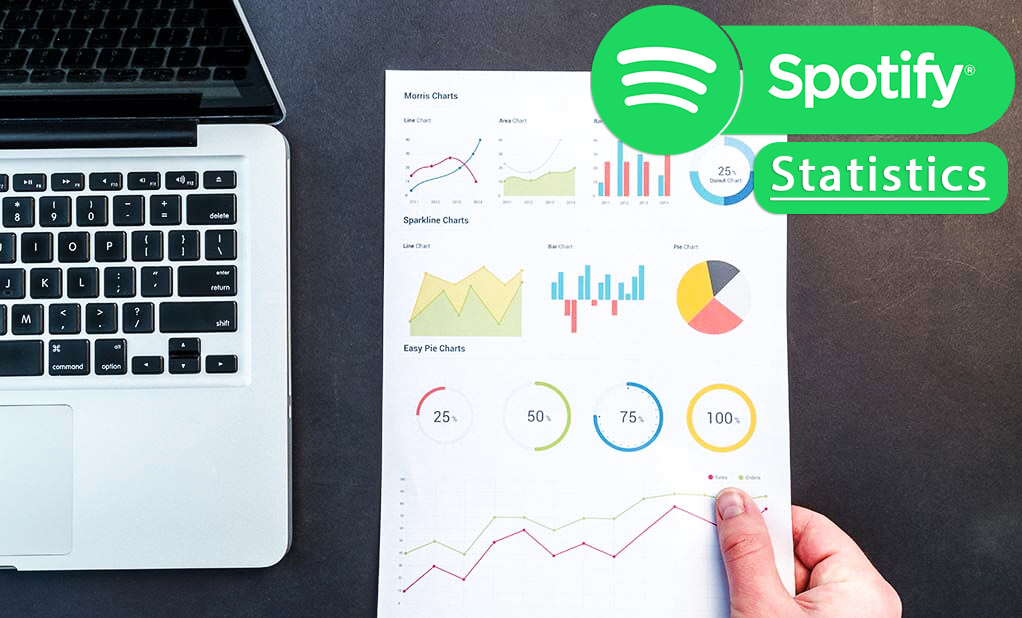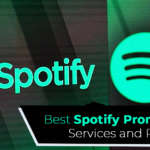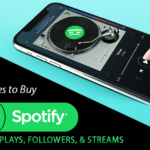Spotify is one of the leading music streaming platforms in the world right now. Let’s take a look at the most important Spotify usage statistics for 2024.
Post Contents
- 1 Key Spotify Usage Statistics
- 2 What is Spotify?
- 3 How Many Users Does Spotify Have?
- 4 Spotify Usage Statistics for 2024
- 4.1 Spotify Started in 2006
- 4.2 Spotify Began Public Registration in 2009
- 4.3 Spotify is Now Available in 79 Countries
- 4.4 Spotify’s Business Model
- 4.5 Signing up with Spotify
- 4.6 Spotify for Mobile Facts
- 4.7 Premium Subscription
- 4.8 Spotify Usage Statistics
- 4.9 Spotify Profitability Statistics
- 4.10 Spotify Music Statistics
- 4.11 Spotify and Artificial Intelligence Statistics
- 5 Final Thoughts
- 6 Sources
Key Spotify Usage Statistics
- Spotify has 365 million monthly users.
- 172 million of these users are premium listeners.
- There are more than 50 million songs available on Spotify.
- Spotify can be listened to in more than 79 countries.
- There are more than 700,000 podcasts on Spotify.
- There are more than 3 billion playlists to choose from.
- Spotify first started back in 2006.
- It is now one of the most popular streaming services in the world.
What is Spotify?
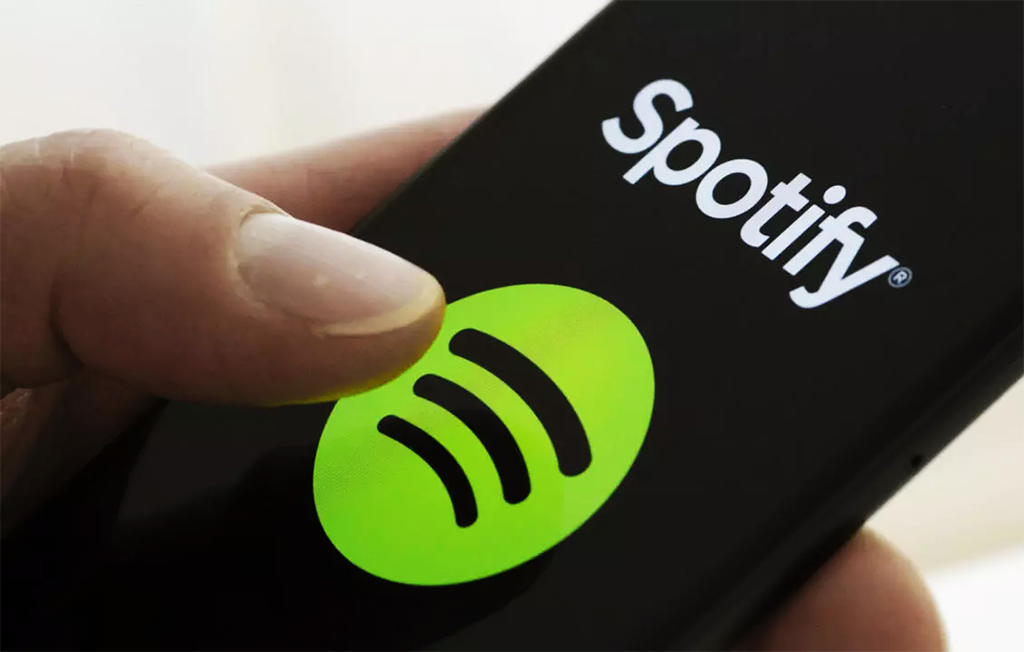
Like most companies and product ideas out there, Spotify was the solution to a problem.
It is an international music streaming platform that lets you listen, access, and download millions of songs on any device. Its overall goal is to make its content universally accessible.
Spotify was created with the goal of preventing people from downloading music illegally. Let’s take a look at how many users Spotify has, among other important Spotify statistics.
How Many Users Does Spotify Have?
In the second quarter of 2021, Spotify had 172 million people subscribed to its premium service around the world, which is an increase from 144 million in the same quarter in 2020.
This means that Spotify’s user count has increased exponentially since 2017 – in fact, it has more than doubled.
As far as general users go, Spotify has 365 million monthly listeners. This also means that almost half of Spotify users are signed up to a premium account so that they can enjoy listening to music ad-free.
It’s clear from statistics like this that Spotify is easily one of the most popular music-streaming platforms in the world today, and it’s only set to become even more popular in the future.
Based on how many users Spotify currently has, we believe that this number is only going to increase.
Spotify Usage Statistics for 2024
Spotify Started in 2006
When Spotify first started back in 2006, it was only available in six countries in Europe. However, by 2011, it had launched in the American market, which presented a great opportunity for growth. People using Spotify can choose from two different options.
The free option allows you to listen to music as often as you want, but you will need to put up with ads between tracks. Their Premium option lets you pay a monthly subscription fee, and you gain access to the entire platform, without having to listen to ads. You will also get to enjoy a better music quality.
Initially, Spotify provided free accounts to users by invite, so that it could manage the growth better. It also launched its paid subscription at the same time, so that everyone could pay for it if they wanted to.
Spotify Began Public Registration in 2009
Spotify launched Premium accounts for listeners that allowed them to upgrade to Premium for one month, three months, six months, or 12 months. When this opened to the American market in 2011, the brand adopted a different strategy.
It began by offering a six-month free trial, which was supported by ads. This meant that new users could play music as often as they wanted, without the ads. When those six months expired, users were restricted to listening to 10 hours of music each month, as well as five song replays.
In the same year, the platform decided to drop all limitations that it had around its free service.
Spotify is Now Available in 79 Countries
Spotify now has 44 offices around the globe, and while you might think that Spotify is really popular in America, it is actually more popular in Europe.
What’s interesting about this stat is that it means that if you are trying to get your music out there and in front of more people, you can quickly go international with Spotify.
Yes, the American music scene is one that a lot of people try to dominate from the beginning, but there’s nothing wrong with connecting with members of your target market from around the world as well.
With a platform like Spotify, you have a really good chance of growing exponentially as a result of it being available in so many different countries.
Spotify’s Business Model
As we mentioned, Spotify has two types of subscriptions for its users to choose from. These are part of the brand’s overall monetization strategy.
We think that Spotify’s business model is ideal, and a good setup if you are an aspiring musician.
It means that you can get a lot done with their basic subscription, and if you are earning a little bit more than the average joe, you can even sign up for their premium subscription which is going to allow you to make the most of Spotify without the ads.
It’s nice that they’ve kept things simple like this, because the last thing that you want to do is complicate things.
Free Service Supported by Ads
Spotify’s free version is supported by ads, which is how Spotify has been able to scale its services, and target audiences to start paying for their premium subscription.
However, if you can’t afford their paid plan, their ad-supported version has a reasonable number of features to keep you listening.
Spotify makes money from its free version by selling display, video, and audio advertising.
Majority of People Using Spotify are Between 18 and 34
This majority group presents a very attractive opportunity for marketers.
If you are trying to aim your music at something, aim it at Spotify’s biggest listening group.
There’s a good chance that this is your target market anyway, and considering the majority of people listening to Spotify right now are generation Zers and millennials, we think that Spotify is an excellent platform to showcase your music and get it in front of the people who really matter.
As you can see, it’s also a great chance for marketers out there to play ads to the right demographic as well – you don’t even have to make music to make the most of Spotify for your brand. That’s the beauty of it.
Spotify Users Listened to Spotify for 25 Hours Every Month
This can be broken down to approximately 6 hours per week.
This stat shows that Spotify is definitely not the kind of platform to laugh at, and if you want your brand or music in front of more people, you are going to get a good chance of achieving that here.
Signing up with Spotify
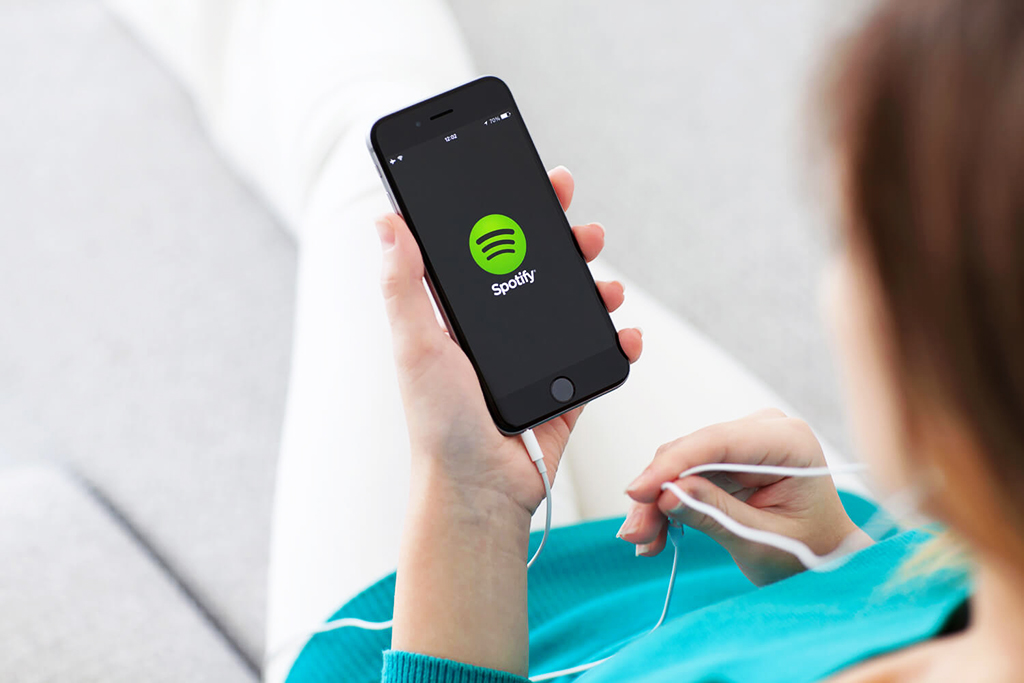
When you sign up for Spotify’s free subscription, you get to listen to any playlist, album, or song at any time.
However, after you listen to a couple of songs, you will need to listen to an ad as well.
The other thing to take note about Spotify’s free subscription is that you will only be able to shuffle songs for so long in playlists – you can’t just choose the next song that you want off the playlist. Again, every few songs you will hear an ad, so it’s up to you how you want to listen to Spotify, and how you want to make the most of it.
Spotify for Mobile Facts
However, if you use the mobile app, things are a bit different. There are limited playlists, where you can freely listen to songs in the order that you want, and you can even skip tracks as well.
However, outside of your personalized playlist, there’s not a lot that you can do. You can listen to artists, albums, or tracks of your choice but on shuffle. This means that you are limited to skipping just six songs every hour.
As you probably have already guessed, a lot of Spotify’s listeners are using the mobile app, which is another reason to think about whether your brand is optimized for mobile or not.
If you have posted an ad on Spotify or you are posting music to your Spotify profile that you are hoping people are going to listen to, you are probably also hoping that they are going to want to check out your website at the same time.
If they are on their smartphone, they need to be able to click through to your website and see it as mobile-friendly. If it isn’t then they might turn away from it pretty quickly, and you could lose a potential customer. The more you optimize your website for mobile, the more you can make the most of Spotify for your brand.
Premium Subscription
Spotify’s paid plan comes with a lot of benefits. It allows you to gain access to high-quality tracks both online and offline. This service has been divided into three different plans. In terms of how many users Spotify has, quite a few of them as you can see from the stat above are signed up for the premium plan.
Compared to some other subscriptions for social media sites in the industry, Spotify’s premium subscription is pretty reasonable. It’s not going to set you back too much every month, and if this means that you are able to freely use the app and use it to your advantage as a brand, it could potentially take you a lot further than traditional marketing techniques and approaches.
Standard Plan
Spotify standard plan allows you to access Spotify’s entire catalog of songs, podcasts, and audiobooks. The service is still available even when you are overseas, and you can play and pick any track on your mobile. It doesn’t come with ads, has offline options, and you can stream content that is high quality.
Student Plan
The student plan offers people the same options but is targeted for students. This means that it lasts for one year at a time and has a four-year limit in total. It is available to students who are enrolled at any University or college. It is slightly cheaper than the standard Premium plan.
Family Plan
This plan allows up to six people who live together to access it. It also allows for parental control over inappropriate music for any member, along with the rest of Premium’s standard features.
Spotify Usage Statistics
365 million people used Spotify per month in 2021
And 165 million of these people are signed up to Spotify Premium.
This means that just under half of the people that used Spotify in 2021 are subscribed to Spotify Premium, a big win for Spotify.
Spotify’s market share in 2021 was 32%
However, Apple Music is not far behind this, with 25% of the market.
It is pretty impressive based on this stat that Spotify not only owns 32% of the online music market, but it has more of the market share than Apple. Generally speaking, Apple has done pretty well for itself in many different avenues, particularly with electronics, but for Spotify to beat it in the music scene is a huge accomplishment.
Spotify Profitability Statistics
Of course, the aim of any company in any industry is to be profitable. However, Spotify has been struggling with this for a long time. They have been reporting a loss for 12 years in a row.
This means that the streaming music giant has been operating for more than a decade, and they haven’t made a profit yet. However, they have still been growing their influence on the market, and they expect to return a profit at some point in the near future.
This stat might surprise you, but it is the case for many apps that have been operating for a while. Most businesses don’t turn a profit in the first three years, and for Spotify to be posting a loss after 12 is disappointing but not uncommon.
One of its issues will have to do with the question of royalties that artists are supposed to receive. There are many big names in the music industry, like Taylor Swift, who have refused to allow their music on the platform because of how little they get paid for it.
While Spotify might be a great place to listen to all of your favorite music and even give you brand a boost, they might want to rethink their business model, as it might not sustain them for too much longer.
$6 billion in revenue in 2018
It’s no wonder that Spotify’s revenue was $6 billion considering how many people use it.
Net loss in 2018 was $48 million
Spotify spends most of its revenue on music licenses and it also spends a lot of money on development and research.
- Spotify has invested $560 million in R&D
- Spotify’s revenue in early 2020 was $2 billion
Spotify Music Statistics
Spotify’s influence in the music streaming market continues to grow year-on-year.
It continues to outperform its competitors when it comes to subscriptions and listens. However, one music streaming giant that it can’t beat is YouTube.
How Many Songs are There on Spotify?
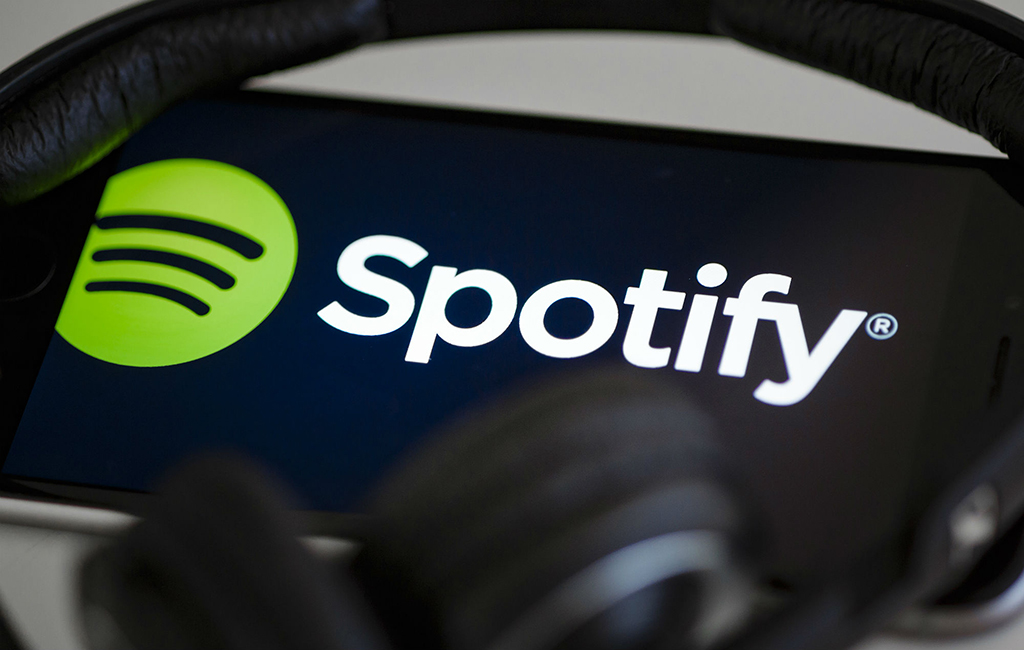
There are currently more than 15 million tracks on Spotify. This is much more than anyone could listen to in their lifetime. Another thing that Spotify has that a lot of other music streaming platforms don’t is a personalized experience.
For example, the annual ‘Spotify Wrapped’ shows you your music choices throughout the year, so that you can look back on your year in terms of music.
Of course, with this statistic showing just how much music there is on Spotify and how long it would take for you to listen to it all, it’s nice that Spotify has kept things nice and organized so that you don’t have to spend too long looking for your next favorite song.
If Spotify wasn’t divided into playlists, then you could spend hours or even days trying to find music that you liked, and even then you would probably be missing out on your ideal tracks.
Post Malone has the most streams
Post Malone had 6.5 billion streams in 2019.
You might think that Billie Eilish is at the top, but it’s actually Post. This doesn’t surprise us, though, considering he got his musical start on another music streaming platform – SoundCloud.
It appears that Post knows exactly what he’s doing when it comes to getting his music out there online and in front of his fans, and we think that he is well-deserving of the title.
This goes to show that you can make it big by posting tracks to your favorite music streaming platform from your room.
Billie Eilish has the most streamed album
And her hit ‘Bad Guy’ was the second most-streamed song of 2019.
- Ariana Grande was the third most-streamed artist of 2019
- Spotify has seen a 50% growth of podcast audience since 2019
This occurred as a result of Spotify’s deal with Gimlet Media Inc., which is a market leader for podcast publishing and creation.
Spotify and Artificial Intelligence Statistics
A big part of why Spotify has been so successful is because of its machine learning and artificial intelligence. Spotify’s decisions are hugely influenced by the data that they are able to collect. The information navigates algorithms and helps them improve user experience.
The tracks that Spotify recommends to its users are comprised of songs that the user might not have heard of before, but based on what they have previously listened to, they are highly likely to be what they’re interested in.
Machine learning improves recommendations over time, which encourages users to come back, and continue to listen to Spotify.
Final Thoughts
These Spotify statistics show that Spotify has no doubt brought a lot to the music streaming industry.
This has made it possible for users to access a huge amount of music, all on one platform. It has also created an alternative that has challenged the illegal music download industry and provides compensation for music artists.
The fact that Spotify is always working on its platform is incredibly appealing for users, and we only expect more growth from them in the future. Based on how many users Spotify has, we think it’s safe to say that it has a big chunk of the music industry pie.







